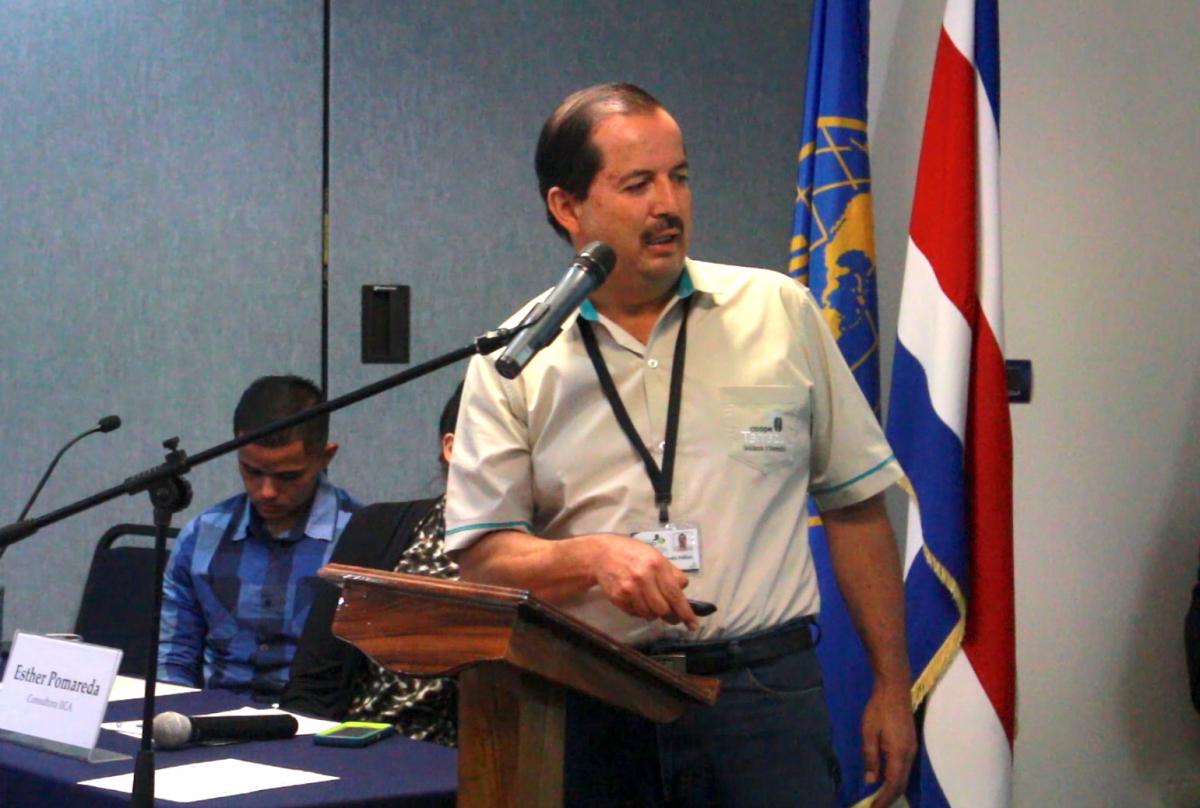Bioeconomy: Costa Rica’s bid to develop agriculture and rural areas

San José, 17 December 2018 (IICA). The production of ethanol, improved compost and biological inputs using coffee husks, mucilage, and pulp are just some of the most beneficial uses for coffee’s major byproducts, which were once considered to be waste. Two Costa Rican companies - Coopetarrazú and Biomatec - have been engaged in this type of production for some time, implementing the bioeconomy in the agroindustrial sector.
Bioeconomy, according to Hugo Chavarría, Coordinator of the Bioeconomy and Production Development Program of the Inter-American Institute for Cooperation on Agriculture (IICA), is a model that enables us to explore how to efficiently and sustainably use biological resources and processes for the purpose of production development, based on newly available knowledge, technologies and information.
Chavarría was addressing participants at the I National Bioeconomy Seminar in Costa Rica, which was organized by the specialized agency for agriculture, the Economic Commission for Latin America and the Caribbean (ECLAC), the Ministry of Agriculture and Livestock (MAG), the Ministry of Science, Technology and Telecommunications (MICITT), the Costa Rica’s Ministry of the Economy, Industry and Trade (MEIC), and the Ministry of the Environment and Energy (MINAE).
The specialist also emphasized that Latin America and the Caribbean have been blessed with an abundance of biological resources that will allow the region to become a leading player in an environment that is suffering from the increasing impact of climate change and the degradation of existing natural resources.
“The region”, he said, “encompasses eight of the planet’s seventeen most megadiverse countries; covers more than one quarter of the world’s arable land and contains one third of its fresh water resources. In addition to Africa, it has the greatest amount of available land that is potentially suitable for expansion of agricultural production.
The specialist remarked that, “There are bioeconomy pathways available to actors at all levels, whether they be large players with access to disruptive technologies that allow them to use biomass in new ways and to develop linkages with industries outside of the agriculture sector, or the smallest players who can implement a circular economy system within their farms. Thus, this forces us to ask ourselves: How can we use these bioeconomy pathways in all agrifood chains and in rural areas?”.
Adrián Rodriguez, Chief of the Agricultural Development Unit of the Economic Commission for Latin America and the Caribbean (ECLAC) concurred, emphasizing that “Costa Rica is a country that has the potential to become a leader in bioeconomy development and one of the challenges is to establish its position in this area at the global level”.
José Rafael Corrales, Analyst of Economic Studies and Information of MAG, said “it is in agriculture and rural territories of Costa Rica where we can find the agro-ecological conditions and the productive capacities to be widely used and enhanced by the bioeconomy”.
On the other hand, Federico Torres, Director of Research and Technology Development at the MICITT, pointed out that Costa Rica’s concrete efforts are defining the path to decarbonization; the establishment of new development paradigms that focus on the circular bioeconomy; and the industrialization of agriculture. These will all prove to be important in placing the country at the center stage of the international bioeconomy.
According to Torres, “The concept of bioeconomy is not widely known by farmers. However, many of them are already implementing it. The challenges are great, but Costa Rica is not starting from the ground up. In the agroindustrial sector, there are companies that are making significant strides with limited resources. The challenge now is to strengthen them, with the assistance of public and private organizations and international cooperation agencies.
Fifty participants attended the meeting, representing public entities such as MAG, MICITT, MEIC, MINAE, the Costa Rican Electricity Institute (ICE), the Costa Rican Coffee Institute (ICAFE), the University of Costa Rica (UCR), the Costa Rican Institute of Technology (TEC), the National University (UNA) and the Tropical Agricultural Research and Higher Education Center (CATIE), among others.
As part of this event, the 2018 IICA Bioeconomy Trade Fair was organized, where some of the pioneering Costa Rican organizations in this area, such as Proyecto Soldado Negro, the TEC Biotechnology Research Center, Cibus 3.0, Hemoalgae, Biomatec, Allbiotech, Porcina Americana and Coopetarrazú, gave presentations on the initiatives in which they are involved.
More information:
Hugo Chavarría
Coordinator, Bioeconomy and Production Development Program, IICA